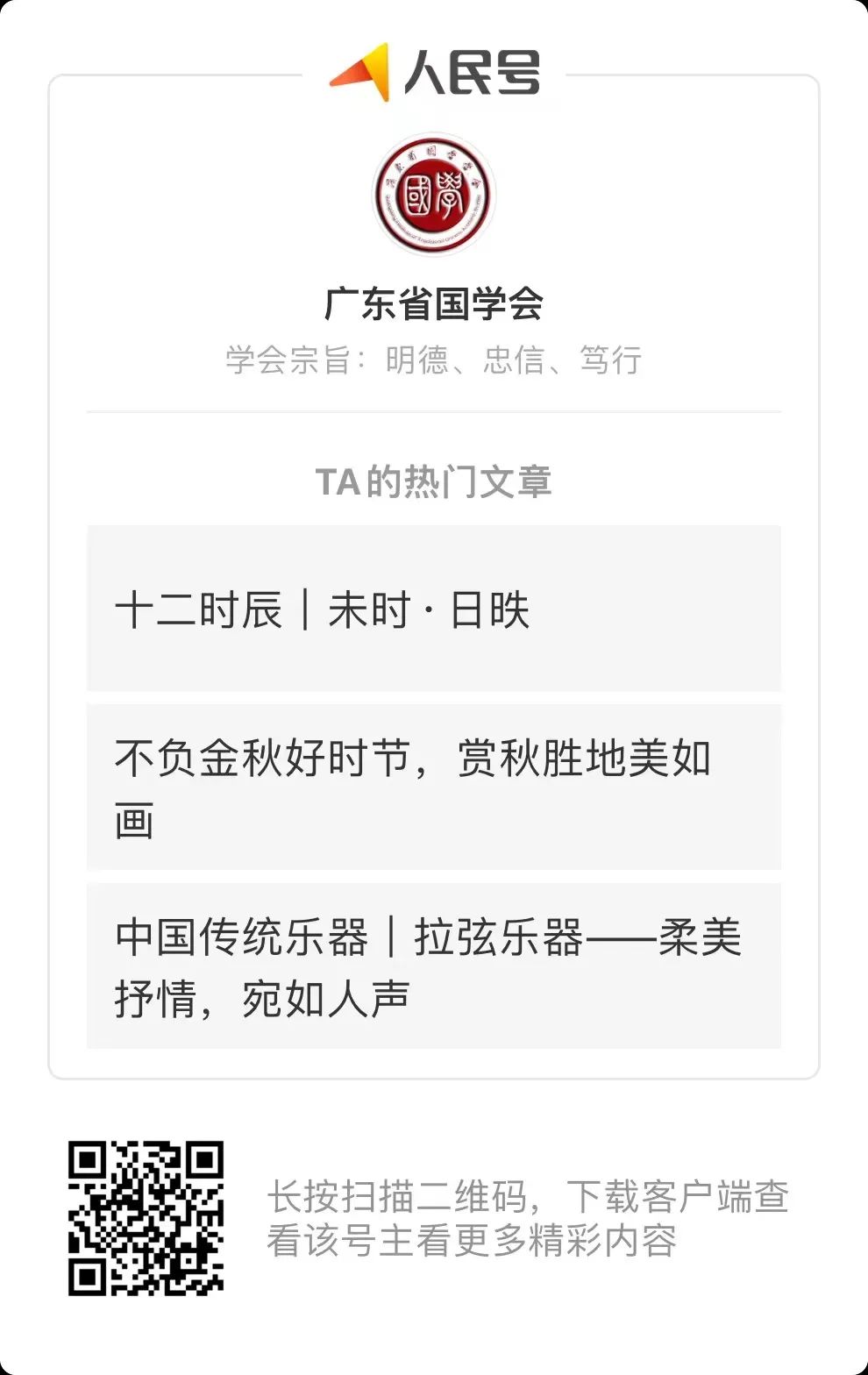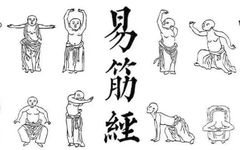The Yi Jin Jing (易筋经), originating from ancient Chinese medical guiding techniques, is known for its effects on strengthening the body and preventing diseases. It has been widely practiced among Daoist, Buddhist, and martial arts practitioners for centuries.
The Yi Jin Jing emerged during the Qin and Han dynasties as a form of guiding technique and was introduced to the Shaolin Temple during the Tang and Song dynasties, becoming a fitness method for monks to invigorate blood circulation while meditating.
The term “Yi” signifies change and transformation, “Jin” refers to muscles and tendons, and “Jing” implies a guide or canon. The Yi Jin Jing is a method of transforming the muscles and tendons through the cultivation of Dan Tian (丹田) energy to open the body’s meridians.
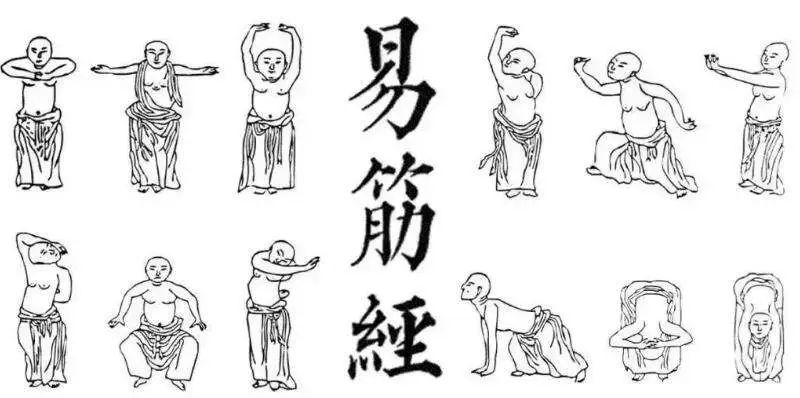
The Yi Jin Jing is a complete set of routine exercises. Practitioners can perform the full set or selectively practice individual movements based on their health status and physical condition. According to the original text of the Yi Jin Jing, beginners are advised to practice “three times a day”—morning, noon, and evening.
Applicable Groups
1. Individuals with shoulder periarthritis, cervical spondylosis, or spinal misalignment
2. Those with mental disorders, obesity, or hypertension
3. Women with cold body constitution or excessive dampness
Key Points of the Twelve Movements
First Movement
Wei Tuo Presents the Pestle
Effect: Calms the mind and stabilizes the spirit. It is effective for neurasthenia, irritability, and insomnia.
Action Steps: Bend both arms at the elbows and slowly raise them to chest level in a hugging position, with palms facing each other (about 10 cm apart). This movement requires the shoulders, elbows, and wrists to be on the same plane, performed 8-20 times while coordinating with breathing.
Verse: Stand upright and straight, arms rounded at the chest, calm the mind and gather the spirit, with a clear heart and respectful demeanor.
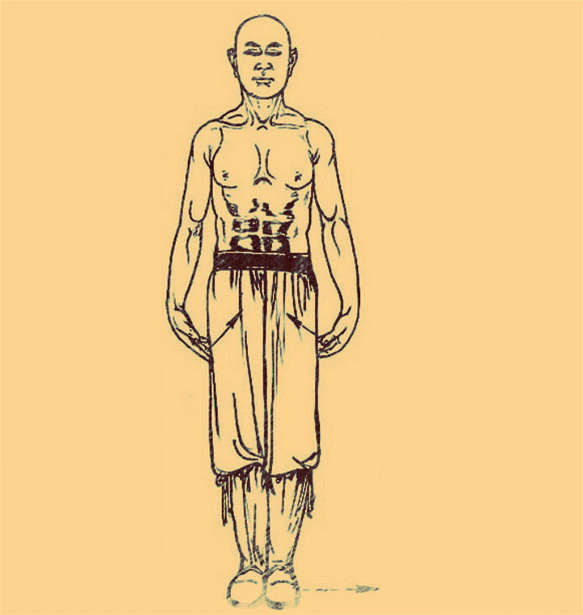
Second Movement
Horizontal Staff to Subdue Demons
Effect: Expands the chest, regulates Qi, smooths blood vessels, balances Yin and Yang, and improves heart and lung function. It is effective for ataxia.
Action Steps: Stand with feet shoulder-width apart, knees slightly relaxed; slowly extend both hands outward from the chest to shoulder height, palms facing outward; inhale while expanding the chest and pushing the arms back; exhale while curling the fingertips inward and pushing the palms outward. Repeat 8-20 times.
Verse: Feet firmly on the ground, arms spread wide, calm and tranquil, eyes wide open.
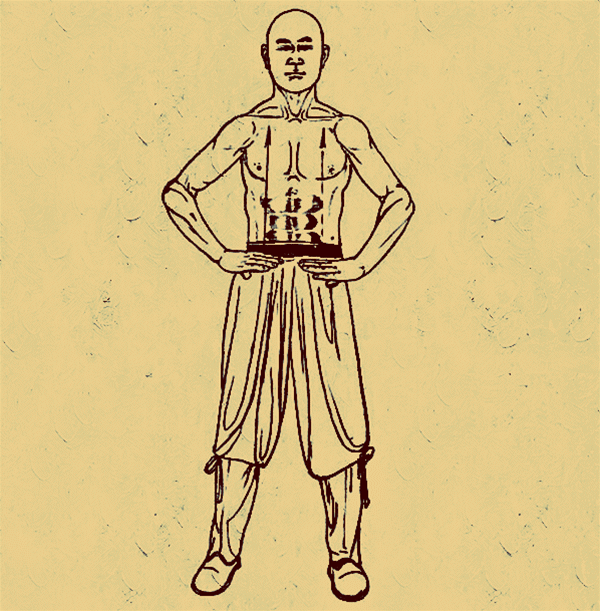
Third Movement
Palms Supporting the Heavenly Gate
Effect: Regulates the San Jiao (三焦), stimulates the Qi of the organs, promotes blood flow to the head, and is beneficial for insufficient blood supply to the brain, low blood pressure, heart and lung diseases, and spleen and stomach weakness.
Action Steps: Stand with feet apart, toes touching the ground, heels raised; raise both hands above the head, palms facing up, with the middle fingers about 3 cm apart; relax the shoulders and bend the elbows, tilting the head back to look at the back of the hands. The tongue should touch the upper palate, and breathing should be steady. Inhale while pushing the hands upward with strength, and simultaneously push down with the legs; exhale while relaxing the whole body and flipping the palms forward and downward. When finishing, turn the palms into fists, with the backs facing forward, and slowly bring the fists to the waist, palms facing up.
Verse: Palms support the heavenly gate, eyes look up; feet touch the ground, stand upright. Strength surrounds the legs, as if rooted; clench the teeth and do not loosen; the tongue can generate saliva and touch the palate, breathing can be regulated to feel at peace. When slowly retracting the fists, apply strength to maintain the posture.
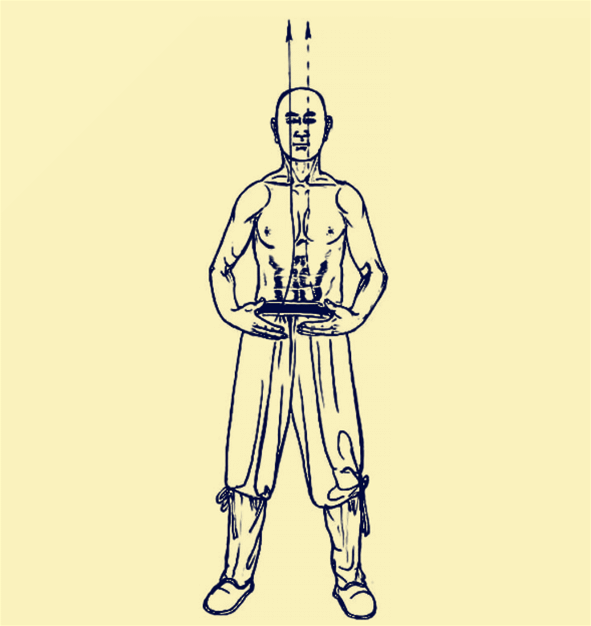
Fourth Movement
Plucking Stars and Changing Dippers
Effect: Acts on the middle Jiao (中焦), providing gentle self-massage to the liver, gallbladder, spleen, and stomach, enhancing digestive function.
Action Steps: Step the right foot slightly forward to form a diagonal stance with the left foot; bend the knees and lift the right heel, lowering the body; raise the right hand high and straight, palm facing down, tilting the head slightly to the right, and looking up at the palm; the left arm bends naturally behind the back. Inhale while lifting the head, and pushing the shoulders back; exhale while relaxing the body and alternating positions on both sides. Repeat 5-10 times.
Verse: One hand holds the sky, covering the head; gaze from within the palm. Breathe in through the nose, adjusting the breath frequently, and apply strength to alternate sides.
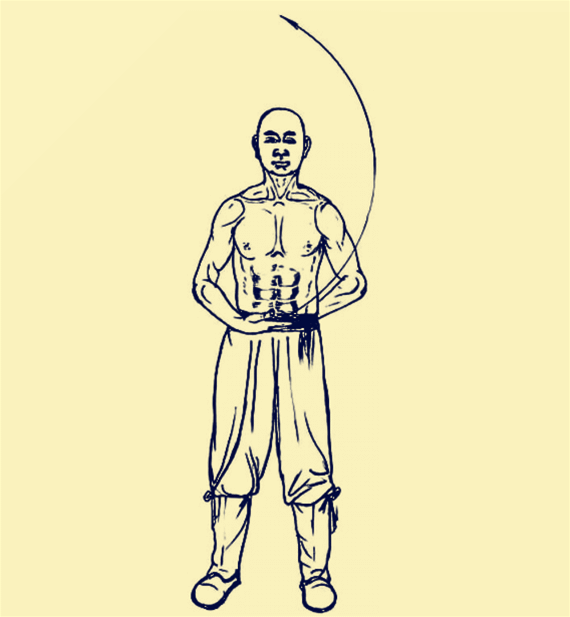
Fifth Movement
Pulling the Nine Cattle’s Tails
Action Steps: Step forward with the right foot, bending the knee into a right bow stance. Make a fist with the right hand, raising it in front, while the left hand also makes a fist, with the left arm bent and hanging behind. Inhale while tightening both fists inward, bringing the right fist to the right shoulder and letting the left fist drop behind; exhale while relaxing both fists and arms back to the preparatory position. Then turn the body back into a left bow stance, alternating hands. Repeat 5-10 times with breathing.
Verse: Both legs extend back and bend forward, the lower abdomen circulates Qi and relaxes; strength lies in the arms, and the gaze must focus on the fists.
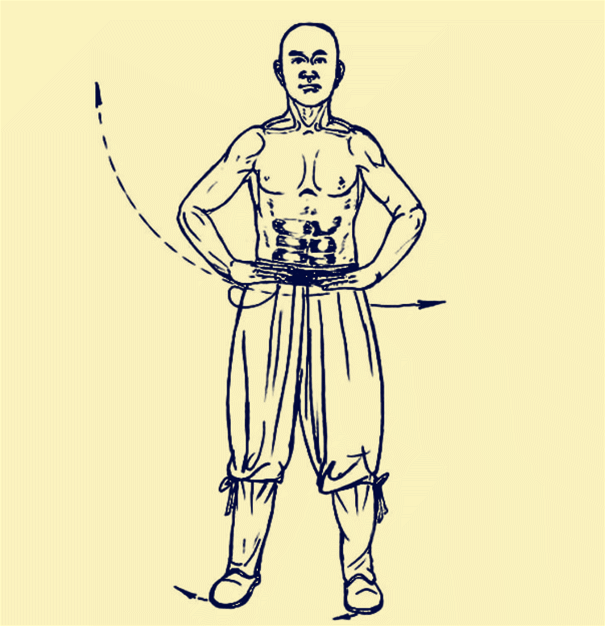
Sixth Movement
Extending Claws and Spreading Wings
Action Steps: Stand with feet apart, arms extended forward, palms facing forward, fingers spread wide, and eyes gazing straight ahead. Raise the heels while supporting the weight on the toes. Gradually spread the palms apart, keeping the arms level, palms facing outward. Inhale while extending the palms with strength, fingers pointing back; exhale while relaxing the arms and palms. Repeat 8-12 times.
Verse: Stand tall and glare, pushing hands forward; apply strength when retracting, the effort must be complete.
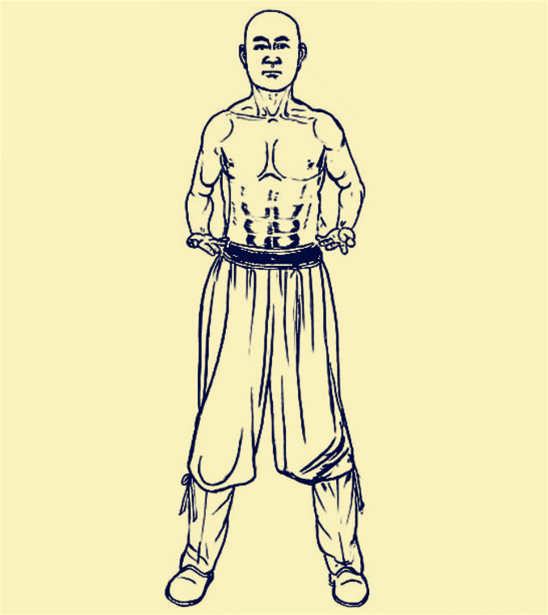
Seventh Movement
Nine Ghosts Pulling the Horse Blade
Action Steps: Stand with toes touching and heels apart in a V-shape; extend both arms forward in a cross-palm position at chest level. Bend the left elbow and bring the hand back, forming a hook with the fingers pointing up; the right hand bends at the elbow and extends back, grasping the left hand’s fingers, creating a neck-holding position. The toes grip the ground, and the body leans forward as if drawing a sword. Inhale while pulling both hands tight, and exhale while relaxing. Alternate sides. Repeat 5-10 times.
Verse: Tilt the head and bend the arm, holding the top and neck; retract from the head, do not mind the strength; alternate sides, keeping the body straight and the Qi calm.
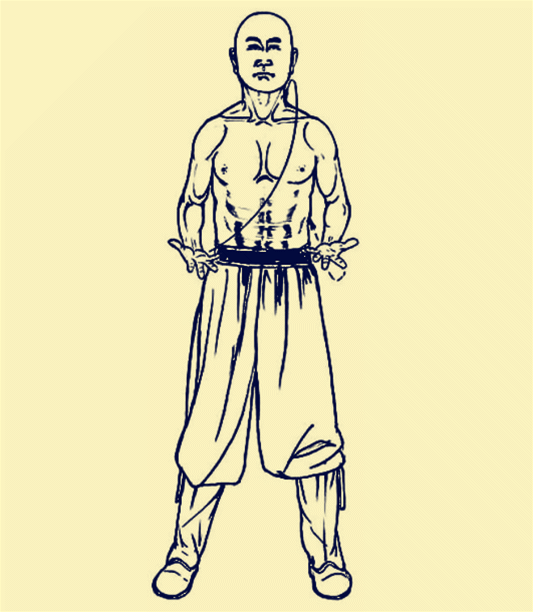
Eighth Movement
Three Plates Falling to the Ground
Action Steps: Step the left foot to the left, bending the knees into a horse stance. Keep the upper body straight, hands on the waist, then bend the elbows and flip the palms upward, raising the forearms as if holding a heavy object; pause for a moment, then flip the palms downward, extending the forearms and relaxing as if putting down a heavy object. Perform the movements with breathing, inhaling as if holding an object, and exhaling as if putting it down, repeating 5-10 times. To finish, gradually straighten the legs, bring the left foot back, and stand upright.
Verse: The upper palate supports the tongue, eyes wide open; feet apart in a squat, hands press down firmly; palms flip in unison, as if lifting a thousand pounds; eyes glare and mouth closed, standing straight without tilting.
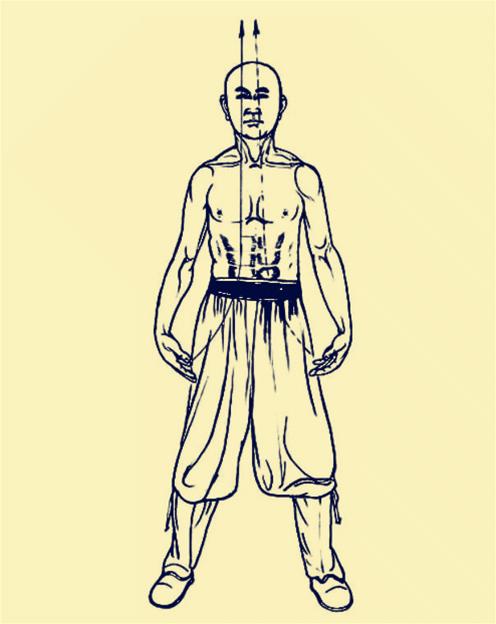
Ninth Movement
Green Dragon Extending Claws
Action Steps: Stand with feet apart, hands in a protective fist at the waist. Extend the right hand forward to the left, fingers curled into a hook, while the upper body turns left. Rotate the waist from left to right, moving the right hand in a horizontal circle from left to right. When the hand reaches the front, lean forward while exhaling; when it reaches the left side, straighten the body while inhaling. Alternate sides, performing the opposite movements. Repeat 5-10 times.
Verse: The green dragon extends its claws, emerging from the right; practitioners emulate this, keeping the palm energy steady; strength surrounds the shoulders and back, wrapping around the knees; eyes gaze straight ahead, breathing regulated and heart tranquil.

Tenth Movement
Tiger Lying in Wait
Action Steps: Step the right foot to the right, bending the right knee into a right bow and left lunge position; lean the upper body forward, supporting the weight with both hands on the ground, slightly raising the head and looking forward. Inhale while straightening both arms, raising the upper body and leaning forward as much as possible, shifting the center of gravity forward; exhale while bending the elbows, lowering the chest, and retracting the upper body, shifting the center of gravity backward, preparing to pounce. Repeat this with breathing, alternating the bending and extending of the arms, and the rising and falling of the upper body, as if a tiger is pouncing. After 5-10 repetitions, switch to the left bow and right lunge position and repeat.
Verse: Feet apart, squatting as if tilting, bending and extending the legs alternately; raise the head and chest to lean forward, arching the back and keeping it flat; breathe evenly, with fingers touching the ground for support; subduing dragons and tigers is the work of immortals, mastering the true form is also hygienic.
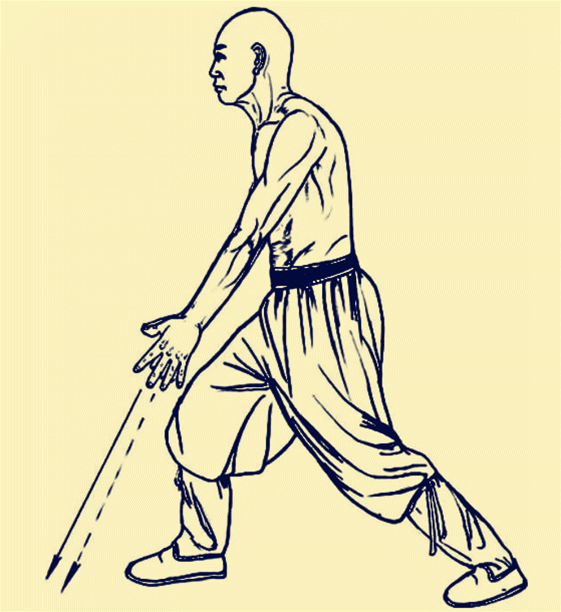
Eleventh Movement
Bowing
Action Steps: Stand with feet apart, toes pointing inward. Slowly raise both hands with palms facing upward to the sides, firmly embracing the back of the head, and gently tapping the back of the head for a moment. Coordinate with breathing to perform the bending motion; inhale while straightening the body, looking forward, as if lifting something; exhale while bending the knees and bowing, using strength to bring the head between the knees in a bowing position, keeping the heels on the ground. Repeat 8-20 times based on physical strength.
Verse: Both hands hold the head, bending down to the knees; the head only probes under the hips, mouth closing the teeth; covering the ears to hear the teachings, adjusting the Qi to be relaxed; the tongue touches the palate, strength lies in the bent elbows.

Twelfth Movement
Tail Dropping
Action Steps: Stand with feet apart, slowly raising both hands from the chest to the top of the head, looking at the palms as they move, keeping the body upright without arching the chest or protruding the abdomen; interlock the fingers, rotate the wrists, and push the palms upward, leaning back while looking up; then bend the upper body forward, letting the arms drop, pushing the palms to the ground, raising the head and glaring. Exhale while bending down, slightly lifting the heels; inhale while standing up, keeping the heels on the ground; repeat this 21 times. To finish, stand upright, raising the arms to the sides, and stretch 7 times.
Verse: Knees straight and arms extended, pushing hands from the ground; eyes glaring and head raised, concentrating with determination; rise and stomp the feet, repeating twenty-one times; stretch the arms to the sides, aiming for seven; then practice sitting, crossing the legs and lowering the gaze; focus on the heart, breathing through the nose; calmness leads to rising, and the skill is complete.
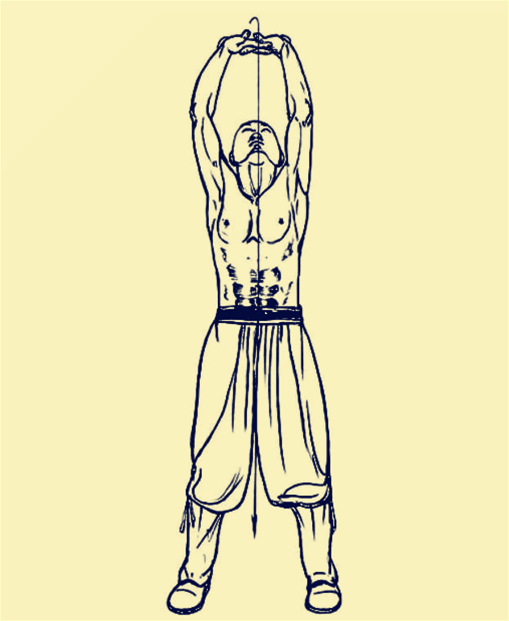
Practicing the Yi Jin Jing requires long-term persistence; a single session has minimal effects on the body. Only through long-term practice can one achieve qualitative changes from quantitative ones. During the practice, it is essential to let the body follow the mind, allowing one’s state to reach a certain height to experience the effects of relaxation and tranquility.
Below is a video for everyone to practice together!
Recommended Reading
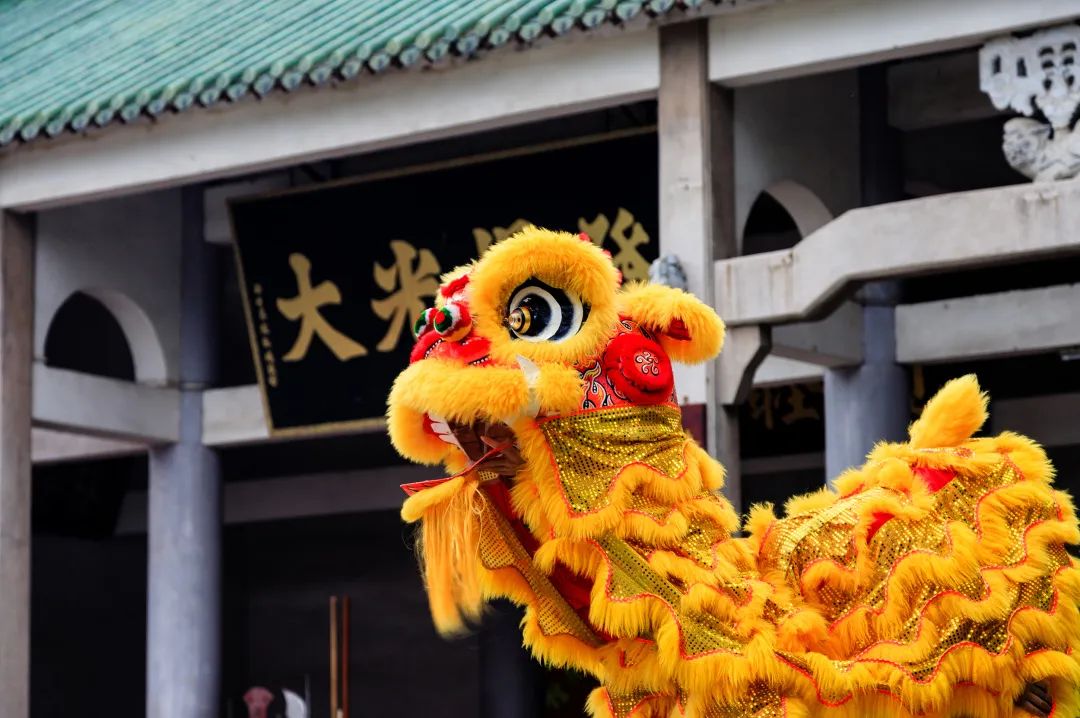
Millennia of Intangible Cultural Heritage: Northern and Southern Lion Dance
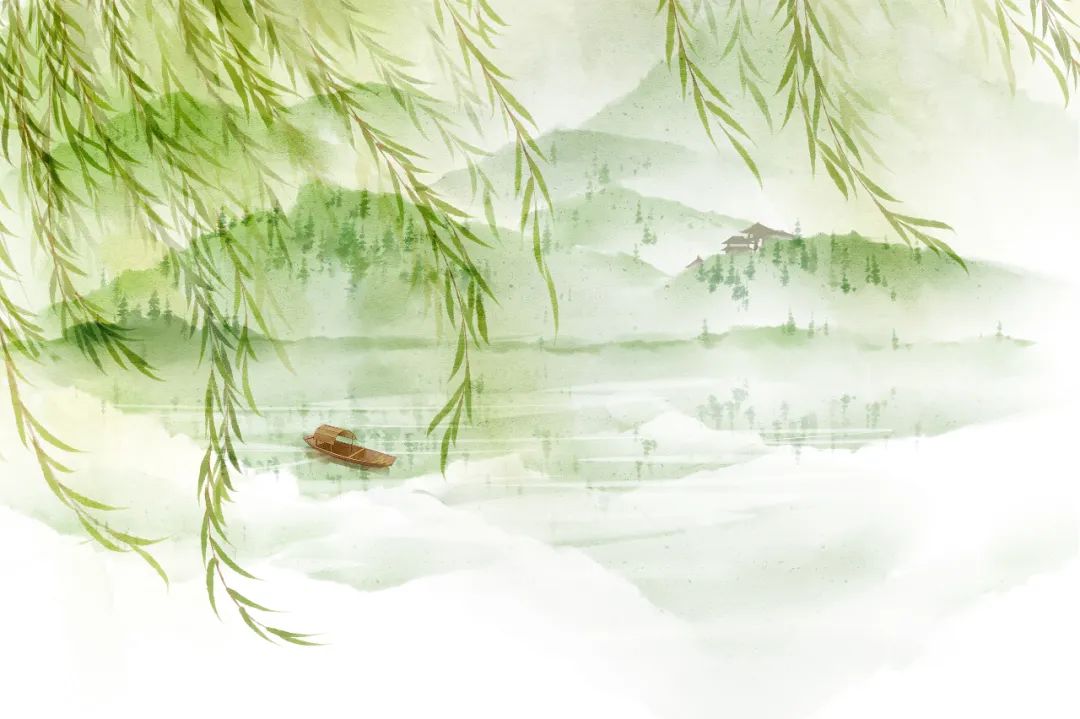
Poetry | Willow Bank, Morning Breeze and Moonlight
